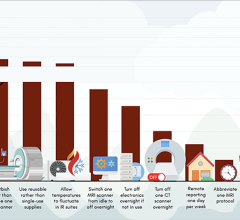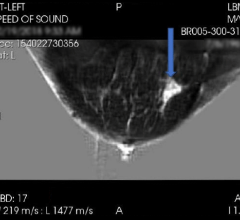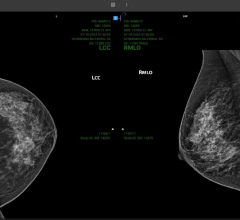
Should Radiologists Be the Gatekeepers of Medical Imaging?
July 9, 2013 — Big changes are coming to the U.S. healthcare system — some in response to the mounting scrutiny of medical imaging. New task force recommendations, the Choosing Wisely campaign and Affordable Care Act policies are all attempting to curtail overtesting — with computed tomography (CT) scans, magnetic resonance imaging (MRI) and any other screening often ordered unnecessarily — that can drive up medical costs, lead to waste and unnecessary radiation, and prompt undue anxiety about false positive results.
These are all worthy efforts, but to really make an impact, a paradigm shift in clinical care will have to happen, Saurabh Jha, MB, BS, of the department of radiology in the Perelman School of Medicine at the University of Pennsylvania, suggests in a New England Journal of Medicine article.
Radiologists must become the gatekeepers of medical imaging, as opposed to serving as just service providers for patients, he writes. In the face of tighter guidelines and ultimately less leeway for physicians to order potentially superfluous tests, he calls on radiologists to be the ones who step forward and manage imaging utilization. But first, they need the power to do so.
“The emphasis on service provision, operations and efficiency has pushed radiologists to the periphery of clinical decision making," Jha writes. “To be effective gatekeepers, they will have to move to the center.”
In the piece, titled “From Imaging Gatekeeper to Service Provider — A Transatlantic Journey,” Jha opens with an anecdote, a trip down memory lane that introduces us to “Dr. No,” a radiologist in Great Britain (where he did his surgery residency) known for turning down requests for scans. Dr. No needed a justified reason, as the country’s system faced limited imaging resources. In other words, you had to have a pretty good reason to order that CT, because often the diagnosis could be found another way.
“[In Britain], radiologists acted as gatekeepers,” he writes. “To get through the gate, clinicians had to be at the top of their game. To triage effectively, radiologists had to think like the referring physicians. Both sides pushed each other, and the net clinical acumen improved.”
Here in the United States, Jha came upon a different approach to treating patients. Fear of displeasing referring physicians or even being perceived as “rationing” care, he noticed, had many radiologists acting more like “Dr. Yes” more often than not.
The healthcare system in the United Kingdom is set up differently from the United States, but there are perhaps some lessons to be learned here, Jha suggests, if we want to get out of the “imaging boom.” Mainly, it shows us that a radiologist, acting as the gatekeeper, can exercise restraint in imaging utilization, he says.
Remember, “gatekeepers don’t simply advise on the best imaging method,” he writes. “They question whether a given diagnosis should be suspected in the first place.”
But such a shift will require two key changes to our health system. The incentive system needs to be changed, as are there no rewards for denying an imaging study — one loses a reimbursable exam and expends time in which other reimbursable studies can be read. But there is a bigger obstacle, he writes: the service-provision mindset. Radiologists do not wish to displease referring physicians, lest they take their business to someone who won’t question their test-ordering ability.
So how do they move to the center and away from the fringe? “They’ll have to develop clinical imaging conferences, act as imaging consultants and conduct imaging rounds. Radiology leadership must provide incentives for these activities without compromising efficiency, by developing granular metrics for quality,” he writes.
Benchmarks will also have to be established for the acceptable proportion of negative studies, and bundled payments for accountable care organizations could offer a sentinel opportunity to face these challenges.
Either way, change is coming and radiologists must decide whether to “greet the ebb of imaging passively or by stepping forward to captain and manage a rational decline,” he concludes.
For more information: www.newswise.com/institutions/newsroom/134/


 April 23, 2024
April 23, 2024 








